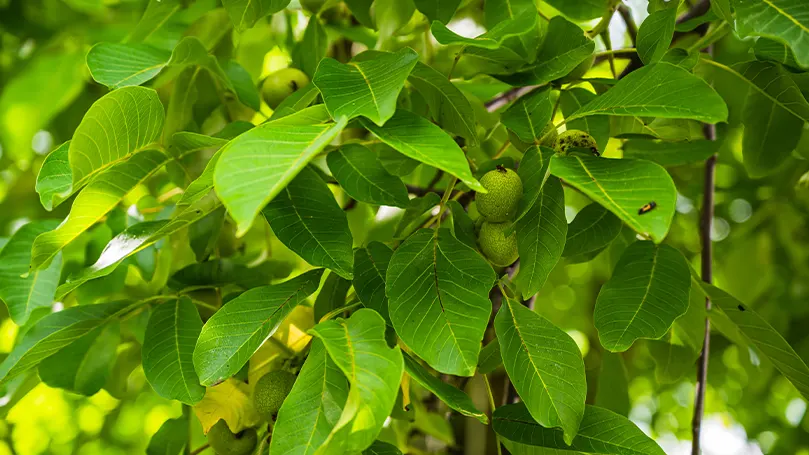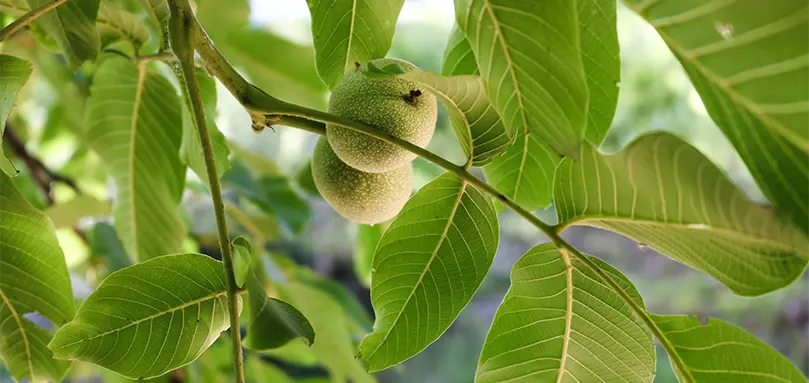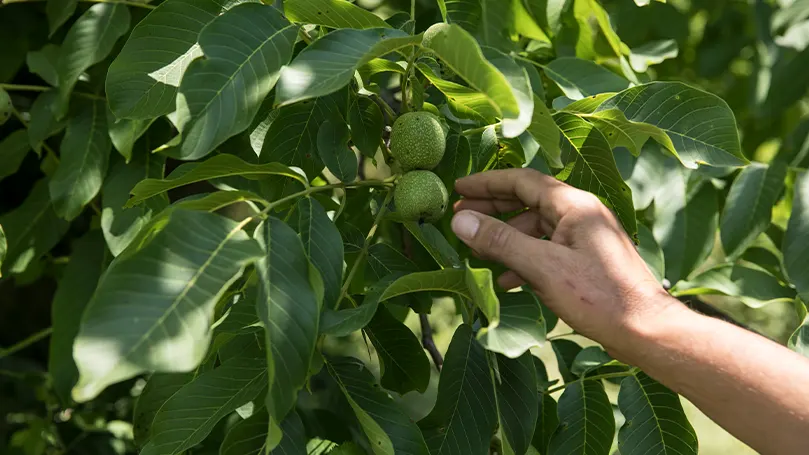The myths of the walnut tree
Walnuts are ancient. In fact, by some records, they're the oldest tree food known to man, dating back to 7000 BCE. And with such a long history, the walnut tree popped up in all kinds of fables and stories, representing the good and the bad. So, in order to see how we got to “sleeping under a walnut tree will kill you”, let's have a brief overview of the major myths.
Walnut trees in religious beliefs
When it comes to myths, legends, and folklore, the story might differ depending on your sources. However, in the stories we could find, the walnut tree represented divinity in quite a few cases.
Firstly, it represented Zeus, as the walnut was seen as a symbol of wisdom. And in the same collection of stories from ancient Greece, it is said that Dionysus turned a princess that he loved into a walnut tree. And if we look towards the Romans, we can see a similar trend. In their mythos, walnuts represented Jupiter and there were even stories of how the gods lived on walnuts.
This would also explain the Latin name for walnuts – Juglans Regia, as it loosely translates to the royal Jupiter. And as a fun fact, while there doesn't seem to be any connection to the walnut itself, the Egyptians also had a sky goddess (in a similar vein to Zeus or Jupiter) and her name was Nut. So, from these myths, we can see that walnut trees were more than just a place to find some shade.
Walnut trees in fables
In fables, walnut trees take on quite an interesting role. There are a few fables in particular that directly connect the walnut tree to gratitude. A Greek fable depicts a walnut tree being puzzled at how people show malice towards it even though it provides free food. However, there are similar stories concerning other plants and trees with the same morals (like “The Oak Tree and the Swine” or “Panchatantra“.
There's also a proverb about the woman, the donkey, and the walnut tree. Here the walnut tree ironically states how these three must be hit in order to get what you want. And, as you could imagine, a misogynistic interpretation popped up rather quickly.
Nevertheless, in fables, the walnut typically gives out advice of some kind. It's also a common motif when talking about gratitude, how we treat others, and giving back. And, if we don't count the sexism that arose due to false interpretation, the walnut typically has a positive, wise role.
Walnut trees in customs
There are also a significant number of customs that involve walnuts in some way. Of course, one of the more famous examples of nuts being used in celebration is Christmas, with nutcrackers about and nut hulls everywhere.
However, there are also more obscure customs that deal with the walnut specifically. In some parts of France, it's believed that dancing around a walnut tree will help the mother produce more milk and feed her child. And some even believe in the practice of leaving walnut leaves in the shoes of their lovers for good luck.
And on a similar, although more morbid note, in Bulgaria it's believed that a bunch of steps need to be taken before planting a walnut tree. Otherwise, you risk being estranged from your loved one or even death! So, while the walnut mostly deals with love, we finally see a hint of the myth we'll be discussing.
Are walnut trees dangerous?
Now that we've gone through all of the lore, it's time to answer the titular question – can sleeping under a walnut tree kill you? Well, let's first make one important distinction. When talking about the dangers of walnuts, we're exclusively talking about black walnut trees.
This is because a black walnut tree, or a Juglans Nigra, has a few not-so-friendly characteristics. First off, the leaves and the green shells of black walnuts contain something called tannins. And for some people, ingesting tannins can cause intoxication. That being said, it's unlikely that you'd just start munching on fallen leaves.

But the more important factor is a chemical called juglone. It can be found in the roots, hulls and the bark of a black walnut and it can be toxic. However, it's important to note that juglone only becomes toxic once it has been exposed to air. In other words, being close to the hulls of a black walnut (the green layer covering walnut fruits) isn't dangerous by itself.
However, if you start ripping it apart, or take an axe and start swinging at walnut wood, it can be dangerous. But again, there are a lot of caveats.
For one, it depends on the specific walnut tree. For example, the English walnut can also have juglone toxin breaks but it's a much lesser quality. Even the season affects how much juglone the tree might have!
Should you be worried?
In short, no. We couldn't find a single report of anyone being harmed, let alone killed by the juglone of a black walnut. The only form in which we could find that a walnut has ever hurt humanity is a report stating that people tend to fall off the tree somewhat frequently.
Plus, when you take into account that walnut trees, like all plant life, get rid of carbon dioxide and give us the air we breathe – we'd say they do more good than harm. At least, when it comes to humanity. When it comes to other plants, it's a bit more complicated.
Do black walnut trees endanger other plants?
While we don't have to worry about walnut trees, unless we're climbing them, our companion plants might not be as lucky. This is because there are plants sensitive to juglone toxin breaks. Susceptible companion plants include vegetables, like potatoes, Yew shrubs, and even fruit trees such as crabapples.
How it works is that the walnut tree contaminates the soil where it's planted, affecting the local plant population. And since the “danger zone” for a mature tree occurs in a 50-foot radius, it's important to keep this in mind. Not to mention that it can take two to four weeks for the soil to go back to normal!
That being said, only certain plants are affected. You can find a list of some of the affected plant species here. And, if you have a garden with a black walnut tree, we suggest looking into it.
Should you sleep under a walnut tree?
Lastly, to answer the titular question, yes. There's no reason why you shouldn't unless you're part crabapple! The myth that you'd go mad or die is just that – a myth. And while we can understand how this myth came to be – as farmers likely say the surrounding plants go yellow and die, we now know how it all works.
Lastly, let's just put it this way – over 50k people in the UK die from heatstroke a year. Meanwhile, there are no people on record that have died from the walnut curse. So, lay down in the shade and catch up on your sleep!














There are no comments yet
"*" indicates required fields